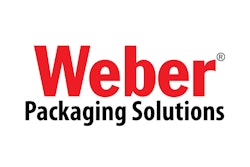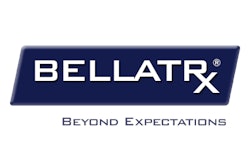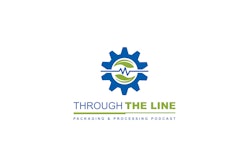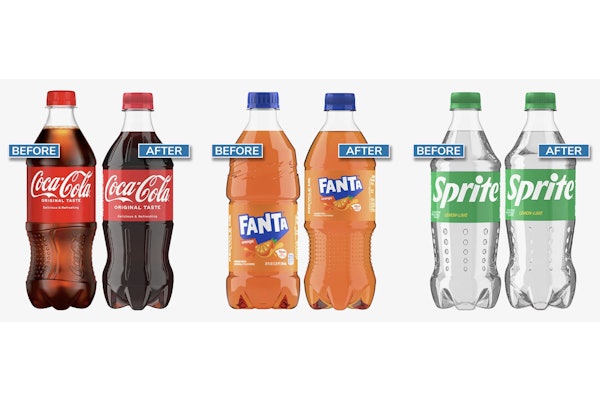While goalposts continue to shift regarding tariffs under the Trump Administration, the days when a minority of packaging and processing manufacturers felt the effects have passed. Two months ago, only 42% of businesses surveyed reported experiencing the impact of tariffs. On May 12, 89% of attendees at PMMI Town Hall: An Update on Navigating Tariffs Changes stated that tariffs are directly affecting their business.
“This shift tells us that companies are no longer on the edge of impact—they’re squarely in it,” said Izquierdo, Vice President of Market Development at PMMI, who moderated the session adding that 43% of webinar attendees reported a drop in business activity—up significantly from 27% earlier in the year.
With U.S. tariff decisions evolving rapidly—particularly with China, Europe, and North American partners—machinery builders face rising procurement costs, strained customer relationships, and mounting uncertainty.
Yet, despite the volatility, the conversation between Izquierdo, Shawn Marie Jarosz, Founder and Chief Strategist at TradeMoves LLC, Alan Shuhaibar, President and CEO of BellatRx, and Harrison Chien, VP of Sales, Marketing, and Customer Service at Weber Packaging Solutions, Inc., was notably proactive in tone. For many firms, they now accept that tariffs are no longer a surprise—they're a cost of doing business. The question is: how well are OEMs managing them?
Most firms expect tariffs to increase procurement costs, especially for imported parts. But what stood out in the data was the breadth of the impact:
- 86% cited higher procurement costs.
- 72% anticipated domestic price increases.
- Only 7% said tariffs had no significant impact.
Mitigation: From policy literacy to practical adjustments
Jarosz offered a stark overview of current trade dynamics, including a new 30% tariff on Chinese imports and a breakdown of tariffs by part origin and manufacturing location. She also provided practical advice.
“Companies must understand not just the cost, but also the legality and reputational risks of mitigation strategies like transshipment or undervaluation,” she said. “Know your sourcing, know your obligations, and if you’re USMCA-compliant, you’ve already mitigated a lot of risk.”
One wildcard, according to Jarosz, is legal challenges to the current use of the International Emergency Economic Powers Act (IEEPA), which underpins many of the recent U.S. tariff actions. She noted a growing number of lawsuits and Congressional attempts to rein in presidential tariff authority. While outcomes remain uncertain, any shift could ease or complicate current trade dynamics.
On the ground: Real talk from OEMs
The two manufacturers on the panel—Shuhaibar and Chien—shared firsthand strategies for managing costs, customer expectations, and production planning. What emerged from the discussion did not resemble the chaos many associate with tariffs, but rather one of transformation. Manufacturers are using the tariff moment to:
- Re-evaluate supply chains for flexibility and regional diversity.
- Communicate openly with clients to reduce investment hesitation.
- Shift operations to take advantage of trade agreements and reduce cost risk.
- Develop pricing strategies that reflect short-term volatility without alienating customers.
Shuhaibar, whose Montreal-based company exports more than 70% of its equipment to the U.S., cited the uncertainty, not tariffs themselves, as being the bigger challenge.
“We’ve had to become educators for our customers,” he said. “They hear media headlines and assume the worst. Our job is to walk them through USMCA compliance and show them there’s no surprise coming at the border.”
To insulate against future disruption, BellatRx has invested in U.S.-based operations that allow it to assemble and demonstrate equipment stateside when needed.
Chien echoed the sentiment. “It’s about transparency. Whether we absorb the cost, pass it through as a surcharge, or adjust pricing, every step is explained to the customer in advance.”
Weber, which operates in both consumables and capital equipment, has so far seen limited impact on demand. However, lead times have increased, particularly for parts from Southeast Asia, and customers are being advised to expect fluctuations in availability and pricing.
Above all, the companies say they are adapting. “This is not the time for knee-jerk reactions,” said Chien. “It’s about balancing short-term mitigation with long-term strategy.”
If there's a single message manufacturers should take away from the current tariff environment, according to the PMMI Town Hall, it’s this: plan, don't panic. Between economic headwinds, evolving trade policy, and ongoing geopolitical tensions, reactive strategies are no longer sufficient. Companies that develop adaptable operations and open customer communication protocols will not just survive—they’ll thrive.
“Clarity is your greatest competitive advantage,” said Shuhaibar.






























